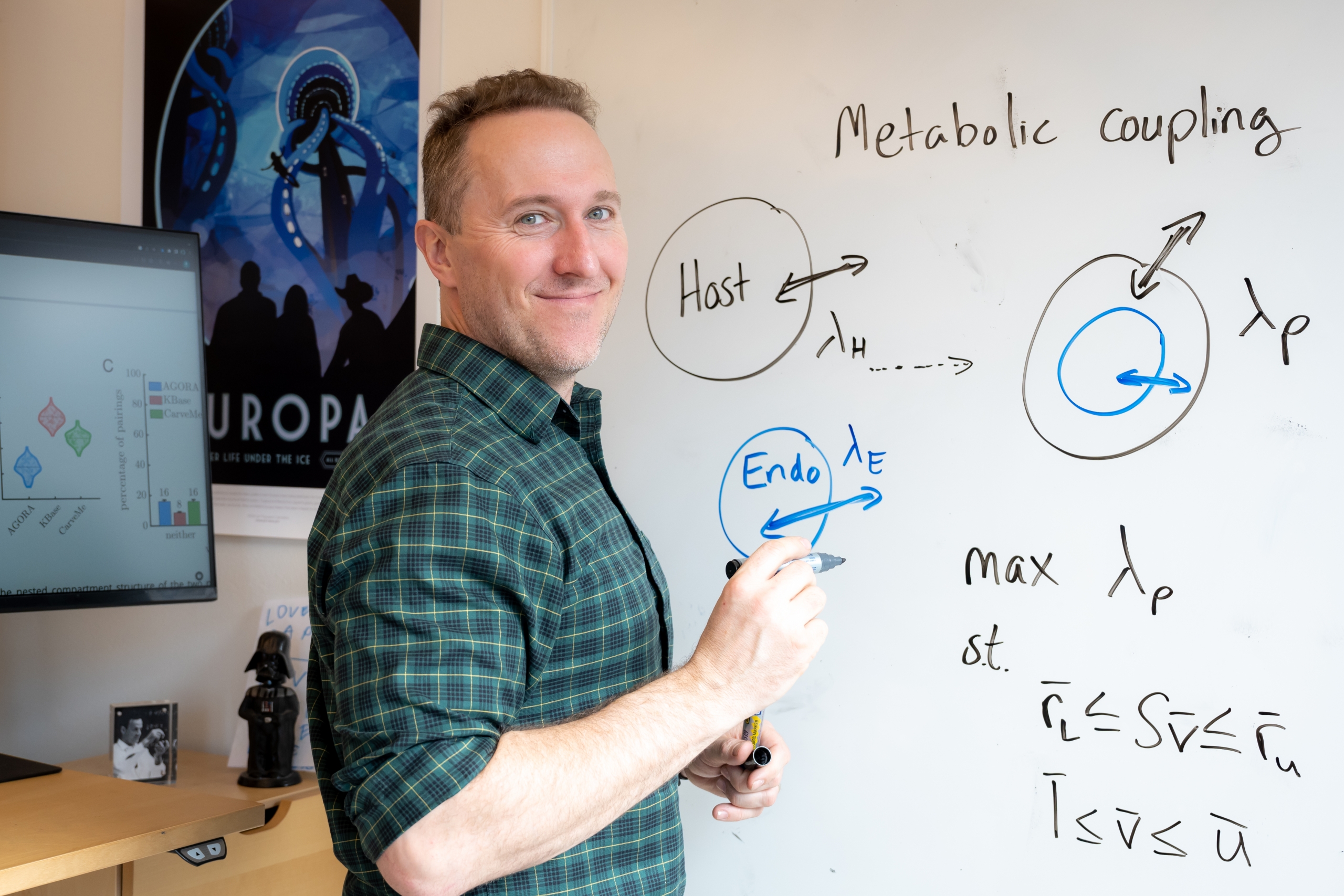Metabolism: not the limiting factor in prokaryotic endosymbiosis
“One of the great mysteries of biology,” says Eric Libby, former SFI Postdoctoral Fellow, now an associate professor at the Integrated Science Lab (IceLab), Umeå University in Sweden, “is eukaryogenesis, or how eukaryotes arose.” Scientists consider this to be a period of major evolutionary transition, critical to our understanding of the history and evolution of life on Earth.
In a new study published on April 18, 2023, in PNAS, Libby worked with SFI Professor Christopher Kempes and Jordan Okie from Arizona State University to investigate the mystery by focusing on metabolism using a variety of theoretical techniques.
Evidence suggests that eukaryotes formed when two prokaryotes — a bacterium and an archaeon — merged with bacteria taking up residence within the cell walls of archaea. This cooperative living of one cell within the other, an endosymbiotic existence, led to an entire diversity of eukaryotes, including all complex life such as us. Today, scientists see the traces of endosymbiosis inside the cells of modern eukaryotes, from mammals and birds to plants and fungi: cellular organelles like mitochondria and chloroplasts were once separate organisms. Yet, when we look around in nature, endosymbioses are rarely seen in prokaryotes.
Why? Evolutionary biologists don’t yet know. Many theories exist, but few have been modeled or quantified.
“Metabolism is a fundamental challenge,” says Libby. “If one cell swallows another can both grow? Can they compete in the population with others that do not have to sustain two cells?”
The research team used three large databases with models of the complete genomes of a variety of prokaryotes to test three evolutionary stages that might limit endosymbiosis: viability, persistence, and evolvability.
The first metabolic question — viability — asks if both organisms in an endosymbiosis can access the resources they need to survive. How hard is it for the endosymbiont — the individual living inside — to access everything it needs from within the host cell?
“As it turns out, it’s pretty easy,” says Kempes. “More than half the networks we tried to pair were viable.”
The second and third questions — persistence and evolvability— measure how well the endosymbiosis can compete against its direct ancestors in a changing environment. The results show that most pairings were less fit and less evolvable than their ancestors, but not always.
“In some sense, it is surprising how over half of the possible endosymbioses between prokaryotes might actually survive,” says Libby. “It was also surprising that given two genomes in endosymbioses, they are less able to adapt than their single-genome ancestors. Both of these results went against our initial expectations.”
Okie adds, ““This means they have a lower potential for diversifying and radiating across the planet, and may help explain why, with the exception of eukaryotes, there are relatively few prokaryote endosymbioses today.”
However, one of the intriguing findings was that many of the modeled pairs did have an advantage when resources in the environment became scarce, says Okie. “This finding could help guide the exploration of the Earth’s microbiomes to discover more prokaryotic endosymbioses living among us.”
The study suggests that metabolic network compatibility is likely not the limiting factor in prokaryotic endosymbiosis. Still, a wide variety of other theories and claims exist.
“What we need is a framework to identify what constraints are limiting”, says Eric, “like a Drake equation for endosymbiosis, except instead of quantifying the likelihood of life existing outside Earth we seek to quantify the likelihood of endosymbioses occurring and persisting.” The next steps for the researchers will be to assess other theories, like the role the environment may play, or how one prokaryote takes in another. Quantifying the different theories and limitations is key to understanding how life may have evolved on Earth, the chances that it might exist elsewhere in the Universe, and the possibility of creating it in a lab.
Press release written in collaboration with Santa Fe Institute Communications Office.


